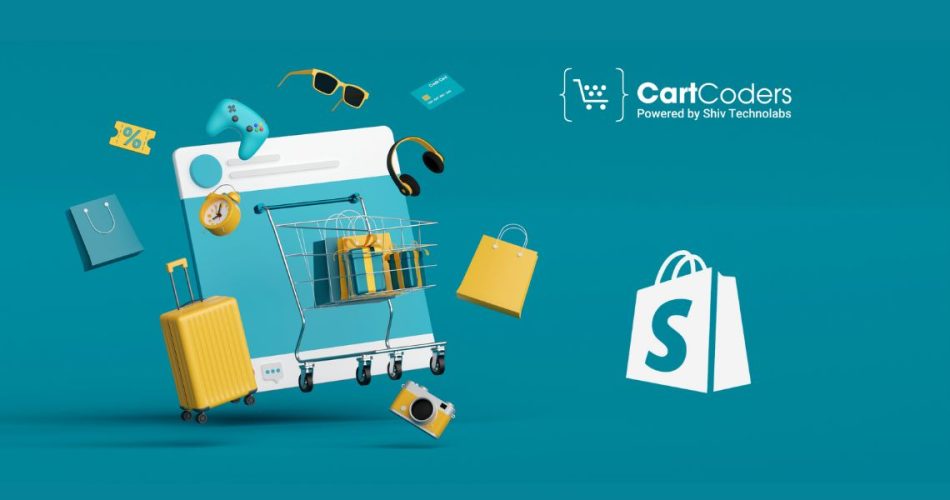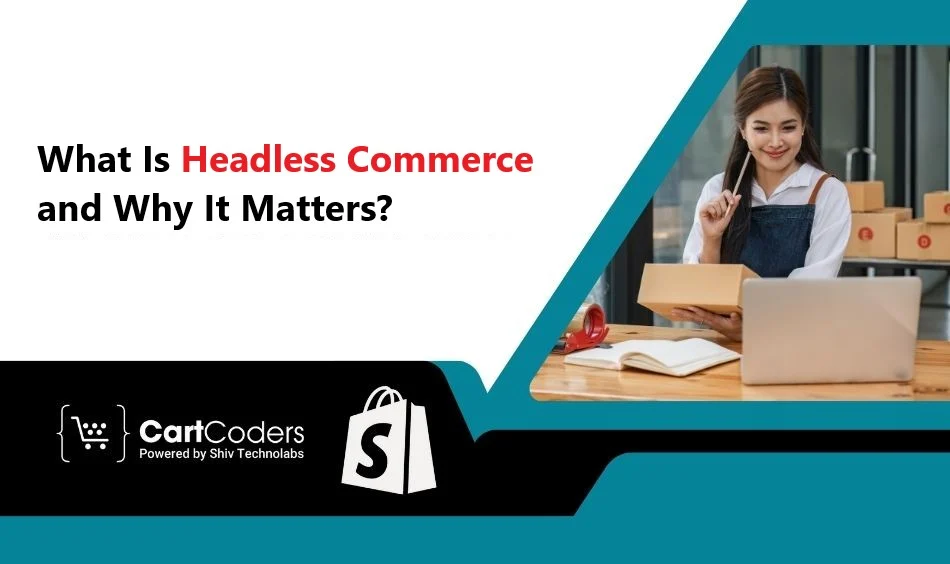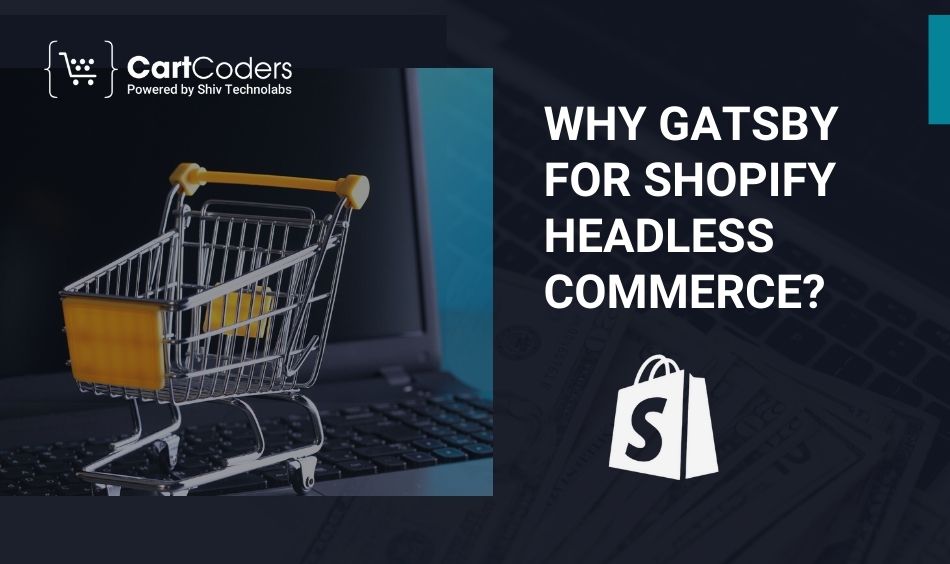Custom Engagement Solutions
Unlock tailored solutions with a free, no-obligation strategy session.
Expert Developers & Engineers on Demand
Scale Your Team with Skilled IT Professionals
Expert Guidance for Digital Transformation

Businesses nowadays seek efficient solutions that balance flexibility, performance, and scalability. A popular strategy that has emerged is headless commerce, separating the front-end presentation layer from the back-end.
Gatsby, a React-based framework, and Shopify, a robust eCommerce platform, form an impressive combination for building headless stores.
Below, we’ll look into why Gatsby is the preferred choice for a Shopify headless commerce setup and how it benefits businesses aiming for optimal site performance and user experience.

Headless commerce is a modern way to build online stores by separating the front-end (what users interact with) from the back-end (where data and operations happen). This setup lets developers create faster, more flexible shopping experiences using the tools they prefer—without being limited by a platform’s built-in templates.
Unlike traditional platforms, headless commerce lets you push content and products across multiple channels—like websites, mobile apps, kiosks, or even wearables—while keeping one central backend.
It’s a popular choice for businesses that want speed, creative freedom, and long-term scalability.
Why Headless Commerce Matters:
Gatsby is a static site generator built on React, and its architecture is particularly well-suited for headless commerce.
With the ability to fetch data from any source, including CMSs, APIs, and databases, Gatsby can integrate Shopify through APIs, creating a seamless blend between dynamic content and fast, static content.
Unlike traditional platforms, where the entire page is reloaded for each interaction, Gatsby enables static generation at build time.
As a result, websites can achieve lightning-fast loading times, contributing to better performance and improved user experience.
Also Read: Cost to Hire a Shopify Plus Developer

Gatsby is a React-based static site generator that connects smoothly with Shopify’s backend via the Storefront API. It helps you build blazing-fast, SEO-friendly storefronts while still using Shopify to manage your products, cart, and checkout.
Here’s why it’s a strong frontend choice for headless Shopify setups:
One of the primary reasons to choose Gatsby for a Shopify headless commerce setup is performance.
Gatsby is built with a static-first mindset, which means it pre-builds pages as static HTML files, reducing server reliance and significantly speeding up the website.
This method results in faster load times, contributing to higher SEO rankings and better user engagement.
A fast website is a need. Slow-loading sites often result in high bounce rates and abandoned carts, but with Gatsby, load speeds are drastically reduced by pre-building pages.
For instance, if your store is running a product-heavy site, customers won’t have to wait for each product page to load individually. Gatsby handles this with static generation, providing near-instant page loads.
Gatsby’s React-based architecture makes it highly customizable. Developers have complete control over the front-end, allowing for bespoke designs that fit brand aesthetics without the constraints of Shopify’s traditional themes.
With Shopify as the headless back-end, businesses can offer tailored customer experiences that meet specific design and functionality requirements.
In addition, Gatsby integrates well with various APIs, allowing businesses to easily add third-party services like search engines, personalization engines, or content management systems.
This flexibility enables businesses to adapt quickly to market demands and offer features that align with their customer journey.
Search Engine Optimization (SEO) is essential for an eCommerce site’s visibility. Shopify itself offers strong SEO capabilities, but when paired with Gatsby, the SEO potential grows even more.
Gatsby’s static site generation ensures that all pages are optimized for search engine crawlers right from the start.
With Gatsby, you can implement structured data, meta tags, and other SEO best practices without the limitations that traditional platforms may impose.
This results in faster page indexing by search engines and better ranking potential, which can drive organic traffic to your store.
Also Read:- Manage and Collaborate with Your Shopify Plus Developers
For businesses planning growth or expecting traffic spikes during events like flash sales or promotions, scalability is a crucial factor. Gatsby’s static architecture naturally supports scaling since all pages are pre-generated.
There’s no need to worry about server performance during peak traffic times because Gatsby sites are hosted on content delivery networks (CDNs). CDNs distribute static content across the globe, ensuring that users experience quick load times regardless of location.
In contrast to server-heavy platforms where high traffic can lead to slowdowns or downtime, Gatsby’s architecture guarantees that your Shopify store will maintain its performance, even under heavy load.
Security is another key advantage of using Gatsby for Shopify headless commerce. Since Gatsby generates static HTML files, there’s no direct connection to the database at runtime, reducing the attack surface for malicious threats.
Shopify handles the transactional security on the back-end, while Gatsby ensures that the front-end remains secure by limiting vulnerabilities like SQL injections or DDoS attacks.
This decoupling not only minimizes the risk of breaches but also ensures that security updates and patches can be handled independently, without interrupting front-end or back-end functionality.
Gatsby provides out-of-the-box support for Progressive Web Apps (PWAs). PWAs deliver app-like experiences on the web, allowing users to interact with your store even in offline or poor network conditions.
This feature is critical for enhancing customer engagement, especially in regions where internet connectivity is unstable.
Through Gatsby’s PWA capabilities, your Shopify store can offer faster, more reliable, and immersive experiences, contributing to improved user satisfaction and potentially higher conversion rates.
Gatsby’s built-in GraphQL data layer allows developers to query data from multiple sources efficiently.
In a headless Shopify setup, this means that you can pull product data, collections, images, and other information seamlessly into your Gatsby front-end without dealing with complex API structures.
The benefit of using GraphQL is that it provides only the exact data you need, reducing the load on your Shopify store and further improving site performance.
This structured way of handling data is not only efficient but also enables faster development processes.
Gatsby provides a well-documented integration with Shopify, allowing developers to sync product data and customer interactions between the platforms. Gatsby’s plugin ecosystem includes the official gatsby-source-shopify plugin, which connects directly to Shopify’s Storefront API.
This plugin makes it easy to import Shopify’s product, collections, customer reviews, and more into the Gatsby front-end. Developers can also create custom components to handle Shopify’s checkout, giving more control over the entire user experience while maintaining Shopify’s secure and robust payment gateways.
React and Gatsby are built on modern web technologies, making them a future-proof choice for businesses.
With ongoing development and a large community of developers, Gatsby stays at the forefront of front-end innovation. This ensures that your Shopify store can adopt new technologies and features as they become available without needing a complete overhaul.
Gatsby’s modular approach also means that specific features or components can be swapped out or upgraded without disrupting the entire site.
For growing businesses, this flexibility is invaluable in maintaining a competitive edge.
Also Read:- Custom Shopify Plus Design vs. Pre-Made Themes
While headless commerce solutions can sometimes be associated with higher development costs, using Gatsby in combination with Shopify allows for a cost-efficient approach.
Shopify handles the heavy lifting in terms of eCommerce functionality, while Gatsby ensures that the front-end is lightweight, fast, and flexible.
Because Gatsby sites are static, hosting is less expensive, and content delivery is managed through CDNs, further reducing operational costs.
Over time, businesses may also save on maintenance and server infrastructure costs.
Choosing Gatsby for your Shopify headless commerce setup offers a wealth of benefits, from performance and SEO to scalability and security.
The ability to create custom, fast-loading, and secure storefronts makes this combination highly appealing for businesses seeking to offer the best user experiences while keeping up with technological advancements.
By leveraging Gatsby’s modern architecture with Shopify’s proven eCommerce infrastructure, businesses can build future-proof, high-performing stores that meet customer expectations and drive success in a competitive eCommerce landscape.
For businesses looking to create a high-performance, customizable storefront, CartCoders is the ideal partner. As a leading Shopify Headless Commerce Development Company, we specialize in building tailored solutions using modern frameworks like Gatsby.
With our expertise in Shopify Headless Commerce Development with Gatsby, we deliver fast, scalable, and secure eCommerce stores that offer seamless shopping experiences.
Let our team help you craft the perfect headless commerce solution that aligns with your business goals and enhances your customer journey. Contact CartCoders today!
Projects delivered in 15+ industries.
95% retention rate, building lasting partnerships.
Serving clients across 25+ countries.
60+ pros | 10+ years of experience.